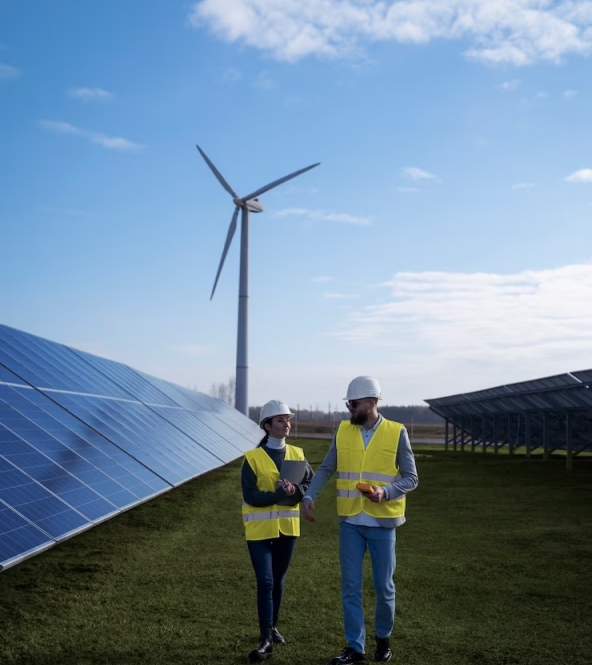How to Install an EV Charger at Home: Simplified Step-by-Step Guide

The world is changing, and so are we! The shift towards electric vehicles (EVs) has been gaining pace over the past decade.
With the increase in popularity of electric vehicles, more and more Australians are considering installing an EV charger at home to make charging their vehicles an easy and hassle-free task.
Australia currently has just over 3,000 EV public charging points (2531 standard AC, 470 supercharge DC) to cover 7.692 million square kilometres.
Source: Savvy.com.au
However, in reality, it’s not as complex as it seems. In this article, we will take you through the step-by-step process of installing an EV charger at home, so buckle up and let’s get started!
Step 1: Assess Your Needs and Resources
Before you dive into buying an EV charger or doing any EV charger installation at home, you need to assess your needs and resources. Some factors to consider include the type of EV you have, its battery size and range, your daily commuting needs, your home’s electrical capacity and wiring, and your budget.
You may also want to check if you’re eligible for any rebates, grants, or incentives for installing an EV charger at home. For example, the Australian federal government’s EV Home Charging program offers up to $1,000 in rebates for eligible residents who install a home EV charging station.
Step 2: Choose Your Charger
Once you’ve assessed your situation, it’s time to choose your charger. There are several types of EV chargers available in the market.
The two main types of EV chargers available are Level 1 (120V) and Level 2 (240V). Level 1 chargers are cheaper and easier to install, but they take longer to charge your car. On the other hand, Level 2 chargers are more expensive but have faster charging times.
Level 2 chargers are the most popular choice for home EV charging, as they can charge an average EV in 4-8 hours, compared to 12-24 hours for a Level 1 charger. If you have a long commute or frequently use your car, we recommend a Level 2 charger.
You’ll also need to decide on the mounting location and style of your charger, such as wall-mounted, pedestal, or portable.
Step 3: Determine the location
Once you have chosen the type of charger you want, the next step is to figure out where to install it. The ideal location for a home EV charger is within 15-20 feet of where you will park your EV.
Look for a location that’s close to your electric meter, but also consider the charging cord’s length and the location of your car’s charging port. It’s best to opt for a location that’s sheltered, to protect the charger from weather conditions.
This ensures that you have easy and safe access to the charger. Remember to account for all the EVs that you may have in the future when selecting the location.
Step 4: Prepare Your Electrical System
Now that you’ve got your charger & location right, it’s time to prepare your electrical system. This step is crucial for safety and efficiency reasons, so it’s recommended to hire a licensed electrician to do the work.
EV chargers need to be installed by a qualified electrician who has experience in working with EVs. They will guide you through the installation process, including using an appropriate circuit breaker, connecting the charger to the electrical grid, and ensuring all safety standards are met.
Step 5: Install and Test the Charger
Once your electrician has completed all the necessary checks, they will install the EV Charger. This may involve running wires from the electric panel to the EV Charger’s location, drilling holes through walls, and mounting the charger on a supporting bracket/stand.
Make sure all the wires and connections are properly grounded and insulated, and test the charger’s performance and safety features by plugging in your EV and checking if it’s charging correctly.
You may need to set up a charging schedule or use a charging app to monitor and manage your charging sessions.
Step 6: Enjoy Your Electric Ride
Congratulations, you’ve made it! You now have a fully functional EV charger at home that can power up your clean and green ride whenever you need it.
Besides the convenience and cost savings, you’ll also enjoy the peace of mind that comes with having a reliable and safe charging solution for your EV.
Now, all that’s left to do is to hit the road and explore the wonders of Australia’s beautiful landscapes, cities, and towns, knowing that you’re doing your part in driving towards a better future for all.
Conclusion
Installing an EV charger at home might seem daunting, but the process is relatively straightforward. By following the steps outlined above, you’ll be able to install your very own EV Charger in no time.
By following our step-by-step guide, you can have a top-performing EV charger that meets your needs and budget, and that makes your EV ownership experience even sweeter.
Remember to take your time, do your research, and seek help from experts if needed. With a little effort and inspiration, you can join the growing community of EV owners who are leading the way towards a cleaner, greener, and brighter future. Happy charging!




